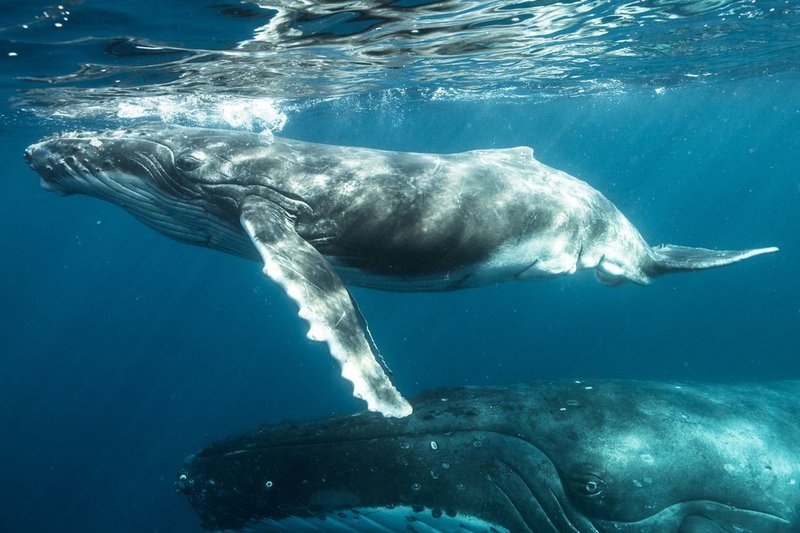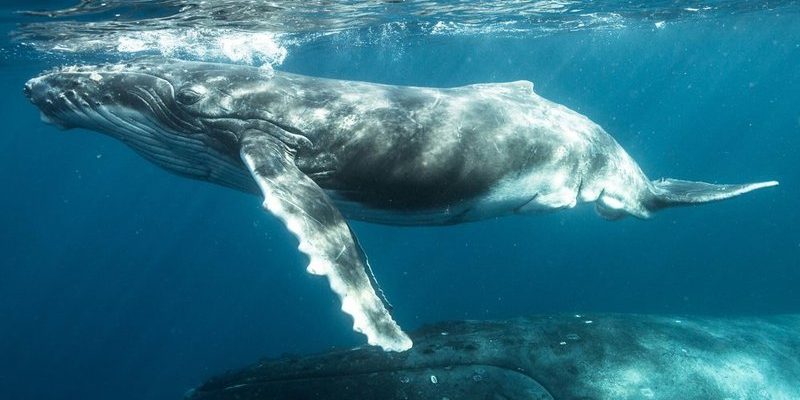
Now, picture a finely crafted remote control. Just like it has buttons that light up or sync with your TV, humpback whales have evolved special features that allow them to thrive underwater. From their massive size to their unique feeding strategies, each adaptation plays a crucial role in their life beneath the waves. So, let’s dive into the ocean and explore how these adaptations help them survive in a world that’s both beautiful and challenging.
The Size Advantage
One of the first things you might notice about humpback whales is their size. They can reach lengths of up to 60 feet and weigh around 40 tons. But why is being large an advantage? Well, for starters, their size helps them regulate body heat in the cold ocean waters. Larger animals generally lose heat more slowly than smaller ones, which is essential for surviving in chilly environments.
Additionally, their sheer size can deter predators. While adult humpbacks don’t have many natural enemies, killer whales, or orcas, might target young calves. A large adult whale can easily fend off these threats, much like a big shield protecting a smaller one. But there’s more to their size than just protection; it’s also about energy efficiency in their foraging habits.
Efficient Feeding Techniques
You might be wondering how humpback whales manage to eat enough to fuel their massive bodies. They have a unique technique known as *bubble net feeding*. Picture this: a group of whales swims in a circle while releasing bubbles, which creates a net-like barrier that traps schools of fish. Then, they take turns lunging through the center to gobble up their captured prey. This collective strategy increases their feeding success and showcases their intelligence and cooperative behavior.
Another fascinating adaptation is their pleated throat grooves. These grooves expand when they gulp water, allowing them to take in massive amounts of water and filter out small fish and krill using their baleen plates. This method not only maximizes their food intake but also makes feeding more efficient. It’s like using a strainer to catch pasta—perfectly designed for the task!
Strong Communication Skills
Humpback whales are known for their complex songs, which are among the most intricate sounds in the animal kingdom. These vocalizations serve several purposes, including attracting mates and communicating with other whales. Scientists believe that these songs may even change over time, similar to trends in human music.
But it’s not just about the tunes. Humpbacks communicate using body language too. They utilize a range of physical behaviors, from breaching to tail slapping, to convey messages to one another. This ability to express themselves is crucial for social bonding and coordinating hunting activities. Imagine trying to plan a dinner party without talking—pretty challenging, right? Communication is key, and humpbacks excel at it!
Adaptations for Navigation
Navigating the vast, open ocean can be tricky, but humpback whales have evolved remarkable adaptations to help them find their way. One of these is their acute sense of hearing. They can detect sounds over long distances, which assists them in locating other whales, potential food sources, and even avoiding dangers.
In addition, humpbacks are known to use the Earth’s magnetic fields for navigation. It’s like having a built-in GPS system! They can travel thousands of miles during migrations from cold feeding grounds to warm breeding areas, demonstrating extraordinary endurance and navigation skills. So, while we rely on our phones for directions, these whales have their own natural compass.
Thick Layer of Blubber
Living in the ocean means dealing with varying temperatures, often much colder than what we experience on land. Humpback whales have adapted to this environment with a thick layer of blubber. This fatty tissue acts as insulation, keeping them warm in chilly waters. It’s similar to wearing a cozy winter coat—absolutely necessary for maintaining body heat.
Moreover, the blubber provides energy reserves during long migrations when food might be scarce. When you think about it, it’s like having a pantry stocked up for winter. This blubber not only supports their warmth and energy needs but also helps with buoyancy, allowing them to glide gracefully through the water.
Unique Flippers and Tail
Let’s take a moment to appreciate the humpback whale’s fascinating flippers and tail. Their long pectoral fins, which can be up to 15 feet in length, are quite unusual compared to other whale species. This unique design allows them greater maneuverability and agility in the water, helping them to perform impressive acrobatics, such as breaching and flipping.
Their large, powerful tail, or fluke, is another marvel of adaptation. It propels them through the water with incredible efficiency, enabling the whales to reach speeds of up to 15 miles per hour if necessary. This speed can be crucial when escaping threats or quickly getting to feeding areas. So, when you see a humpback whale gracefully tail slapping or breaching, you’re witnessing an amazing combination of strength and elegance at work.
Humpback whales truly embody the wonders of adaptation in the animal kingdom. From their massive size and efficient feeding techniques to their advanced communication skills and navigation abilities, every feature plays a crucial role in their survival. It’s like nature’s perfect blueprint—each adaptation finely tuned to help them thrive in the underwater world.
When we think about these remarkable creatures, it’s hard not to feel a sense of awe and respect. Their journey through the oceans, coupled with their unique ways of living, reminds us of the incredible diversity of life on our planet. So, the next time you think about humpback whales, remember that they are more than just their graceful appearances; they are a testament to resilience and adaptability in an ever-changing environment.

